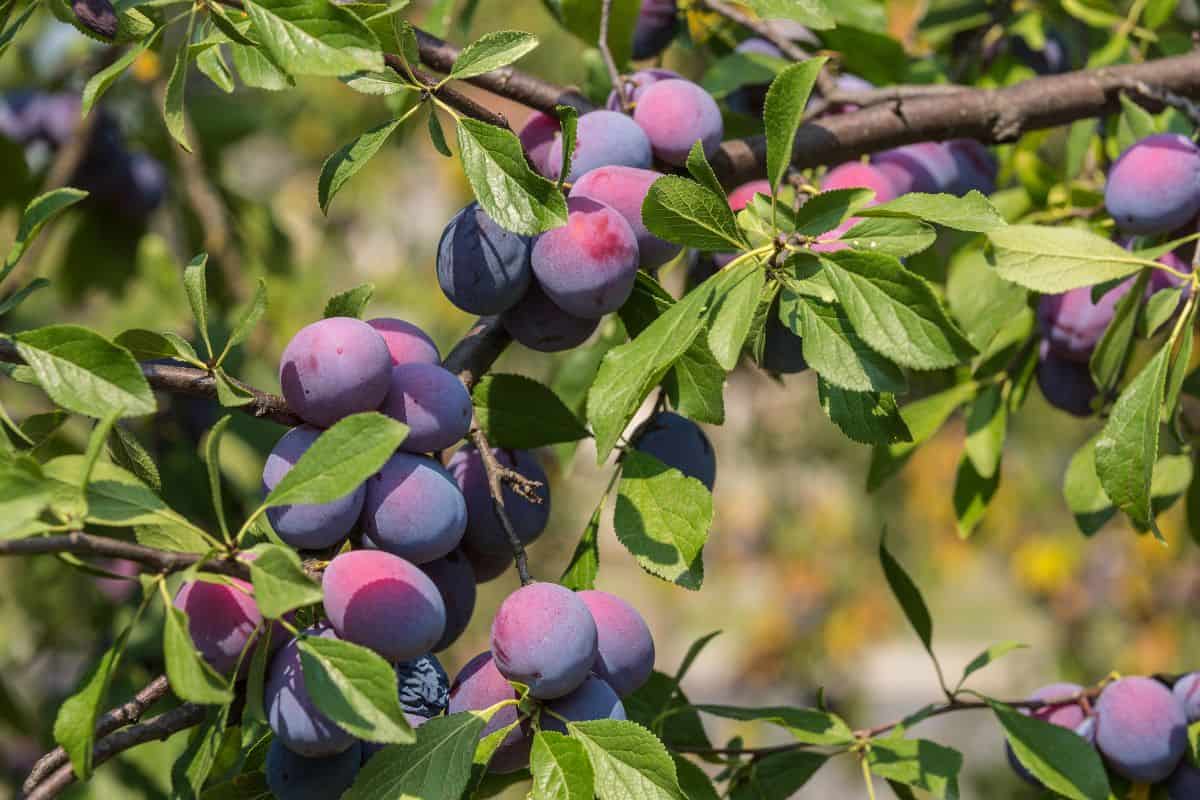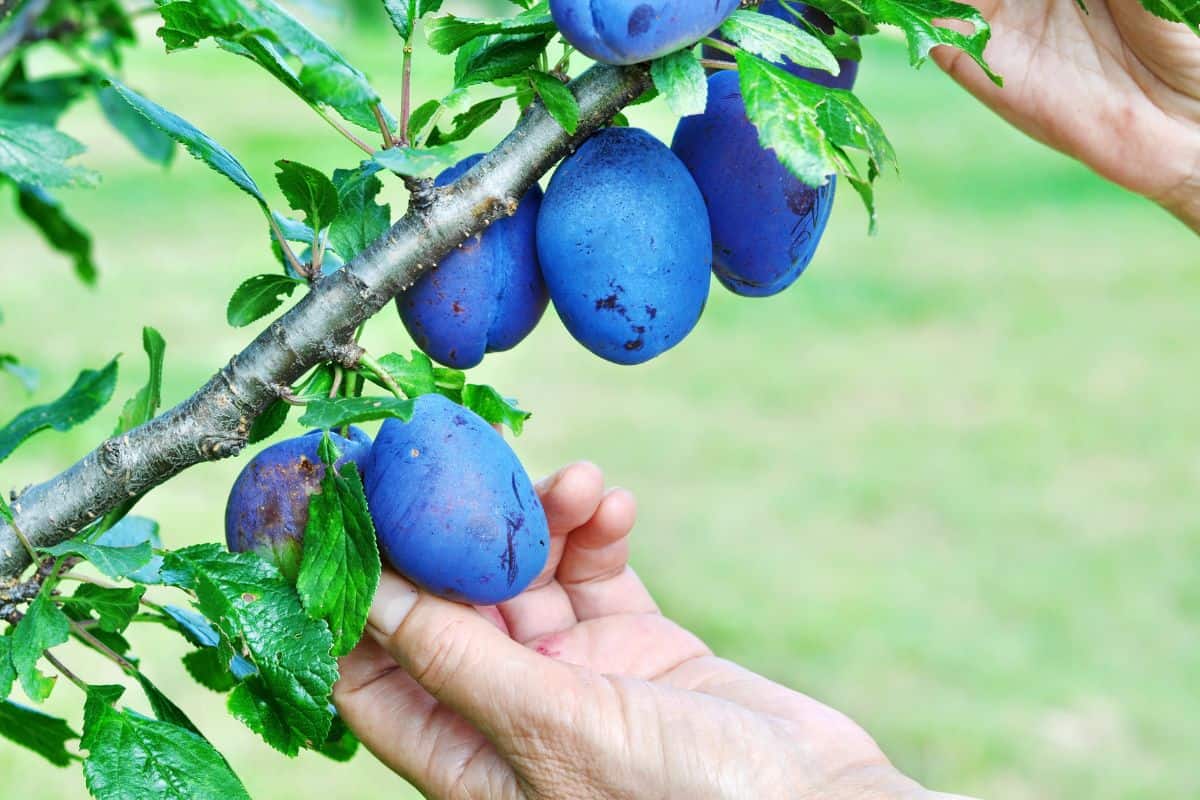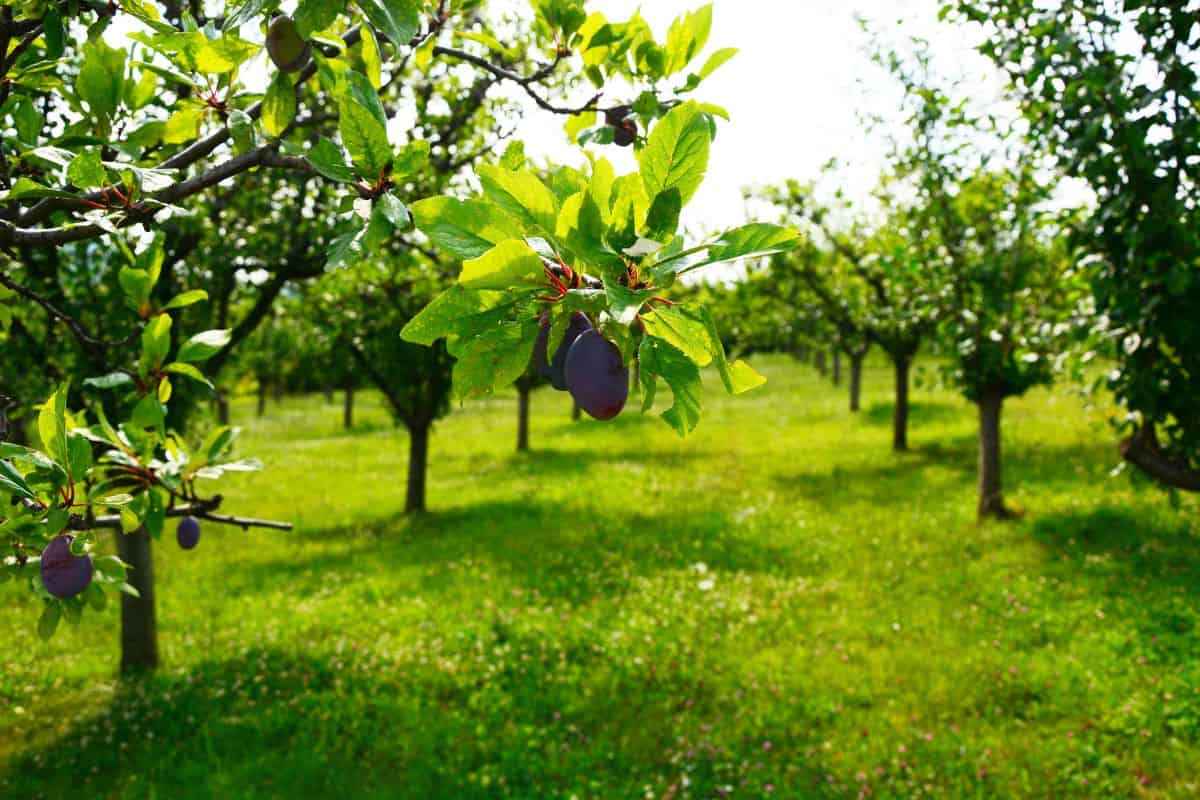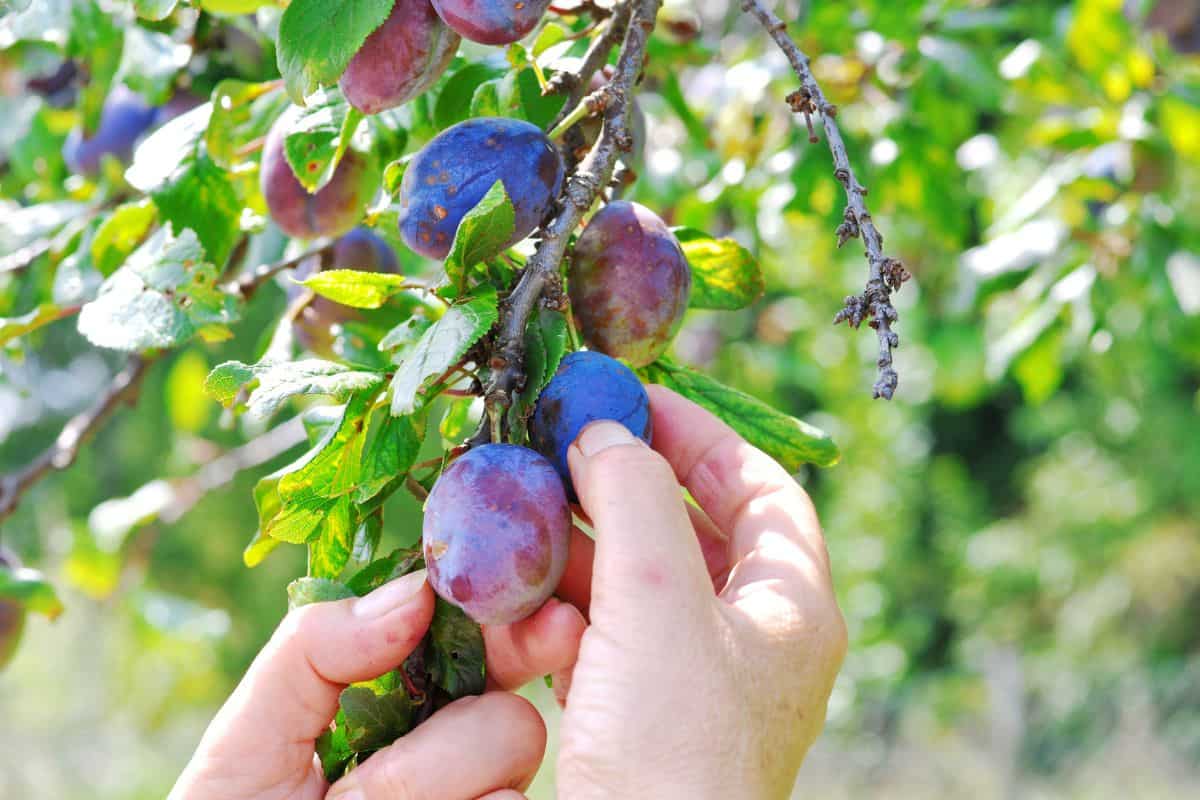Do you want to add a plum tree to your yard and wonder how big the tree might get? Are plum trees massive, and do they need a lot of room? How easy are these trees to grow? We've researched these questions and have the answers below.
Plum trees will generally grow to be between 18 and 20 feet tall. If the conditions are ideal, your plum tree could exceed 20 feet in size. Leaving about 25 feet of space between your tree and other plants/structures is a good idea.
It's also worth mentioning that your plum tree's spread will be about the same as its height, meaning these trees can become pretty large over time.
In this post, we'll discus the size of plum trees and how to grow them. Whether you're planting a single plum tree or many, it always helps to know what you're dealing with. Let's dive right into this topic!
Do Plum Trees Get Big?

Yes, a plum tree can become large as it ages. Generally, these fruiting trees will grow to be anywhere from 18 to 20 feet in height, with a similar-sized spread.
Therefore, your plum tree will need about 20-25 feet of space between itself and other plants and structures. Of course, not every plum tree will become a monolith in your garden. For example, dwarf plums only grow to be about 8-10 feet tall.
On the other hand, some larger plum trees have reached heights of 40 feet with similar-sized spreads.
Most plum trees will top out around 20-25 feet, however, so there isn't much need to leave more space than that most of the time.
Plum Tree Width
Although this number can vary, plum trees should max out at 20-25 feet wide. Therefore, an 18-20 foot plum tree will be about the same size in terms of width. Since plum trees can become expansive, it's a good idea to give yours plenty of room.
Even if you have a smaller plum variety, your tree will likely reach at least ten feet tall and wide, making it big enough to warrant a section of your garden.
Typically, gardeners will need to leave between 20 and 25 feet of space between plum trees, other plants, and their homes. It's better to be safe than sorry, especially with trees that can get rather large.
How Fast Do Plum Trees Grow?
You can generally expect a plum tree to grow quickly for the first few years and then slow down. A plum tree may grow between two and five feet within the first year.
It's worth noting that, in general, a plum tree may grow 24 inches per year. That includes the pre- and post-fruiting speeds, but every tree will be different.
Regardless, you should expect a plum tree to grow between about one and two feet annually. These trees tend to respond best to wide, open spaces and plenty of sunshine.
Another exciting thing about plum trees is that once they reach fruiting age, they'll produce roughly 40-50 pounds of plums per year. So, not only do they grow pretty quickly, but they also are perfect for those wanting to harvest fruit at home.
Do Plum Trees Bear Fruit The First Year?

No. Plum trees won't usually be able to produce fruit in their first year. Instead, it will take three to six years to see your plum tree's first full harvest.
With that said, many people notice fruit form and ripen around year three. Therefore, you shouldn't wait longer than that to experience fruiting, but this can depend on conditions.
According to plant experts, it's also possible to notice baby plums form in faster-growing trees. So, it might be possible to see baby plums start to sprout around year two, maturing into year three.
Your plum tree doesn't have enough energy to make fruit when it's so new in the ground and needs that time to grow into a sturdy plant.
Again, the better your tree grows, the faster it can produce plums. A tip would be to find an already established plum tree and plant it in your garden so you don't have to wait three to six years for fruit.
How Close Can I Plant Plum Trees In My Yard?
It's usually a good idea to plant plum trees 20-25 feet away from each other. As we covered, these trees can become massive, averaging 18 and 20 feet tall/wide.

Even if you have other trees you want to grow, it's a good idea to distance them from your plum tree. Since their spread will be close in sizing, giving your trees plenty of space to sprawl is crucial. One mistake gardeners make with plum trees is assuming they'll remain small.
Although that may be the case for dwarf plums, regular varieties will continue to grow for around a decade. Even dwarf plum trees need 10-15 feet of space around them.
So, to avoid harsh pruning and tree relocation down the road, we suggest keeping plum trees 20+ feet away from each other and whatever else is growing in your landscape.
What Happens If I Plant Fruit Trees Too Close Together?

Growing fruit trees close to one another will encourage more fruit blooming. Even though this sounds like a great thing, too much fruit can be overbearing in your garden.
Many professionals recommend against planting fruit trees close together because it often leads to waste. Especially for those with limited space, having an abundance of plums drop all at once can send your garden into overdrive.
This can cause perfectly ripe and harvestable fruit to rot on the ground, as it can't all be gathered and attended to. So, giving your plum/fruit trees at least 20 feet of space will keep the fruit manageable.
Again, try and give your trees open space and room to sprawl!
Will A Plum Tree Damage Sidewalk?
A plum tree should not damage a nearby sidewalk. Since this species has less aggressive roots, you don't run into significant sidewalk damage if a plum tree is close to it.
However, like any plant, growing a plum tree directly next to a sidewalk can create problems. If you grow a plum tree within 5-10 feet of concrete, there is a chance that it will cause hairline cracking and even lifting down the road.
As your fruit tree matures, it will need more room in the soil. So if a sidewalk is in its direct growing pathway, don't be surprised if you notice some damage. This could start as slight cracking, eventually becoming a major problem.
The roots from your plum tree will follow the light, meaning they could sprout through the concrete and grow outwards. So, give your tree plenty of ground space away from sidewalks to keep this from happening.
Do Plum Trees Have Invasive Roots?
In general, plum trees will not have invasive root systems. Instead, this tree species tends to be more of a peaceful grower, adapting to nearby surroundings, like plants and structures.
As we said before, plum trees are fast growing, so during that initial spurt, damage can be more likely because of your plant's roots.
For example, growing a plum tree next to another shrub or smaller tree could lead it to fight for water, nutrients, and oxygen beneath the ground's surface. After all, your plum tree needs these things to survive and continue maturing.
That may lead to aggressive behavior from the plum tree, causing damage to the other plant nearby. Again, this shouldn't be too serious, but it is possible if your tree isn't spaced properly.
Wrapping Up

Whether you have one plum tree or many, it's good to understand how the tree grows. From what we found, plum trees can grow to be 18-20 feet on average, although some may reach 25-40 feet upon full maturity.
You want to ensure your plum tree has around 20-25 feet of space between itself and other trees/structures. Maintaining room between your plum tree and other buildings and structures will prevent damage.
This species grows the fastest in year one and slows down around years three through six when it begins producing fruit.
Check out these helpful related garden articles:
Plum Tree Dying – What To Do (lnc. Victoria, Purple, And Ornamental)?
